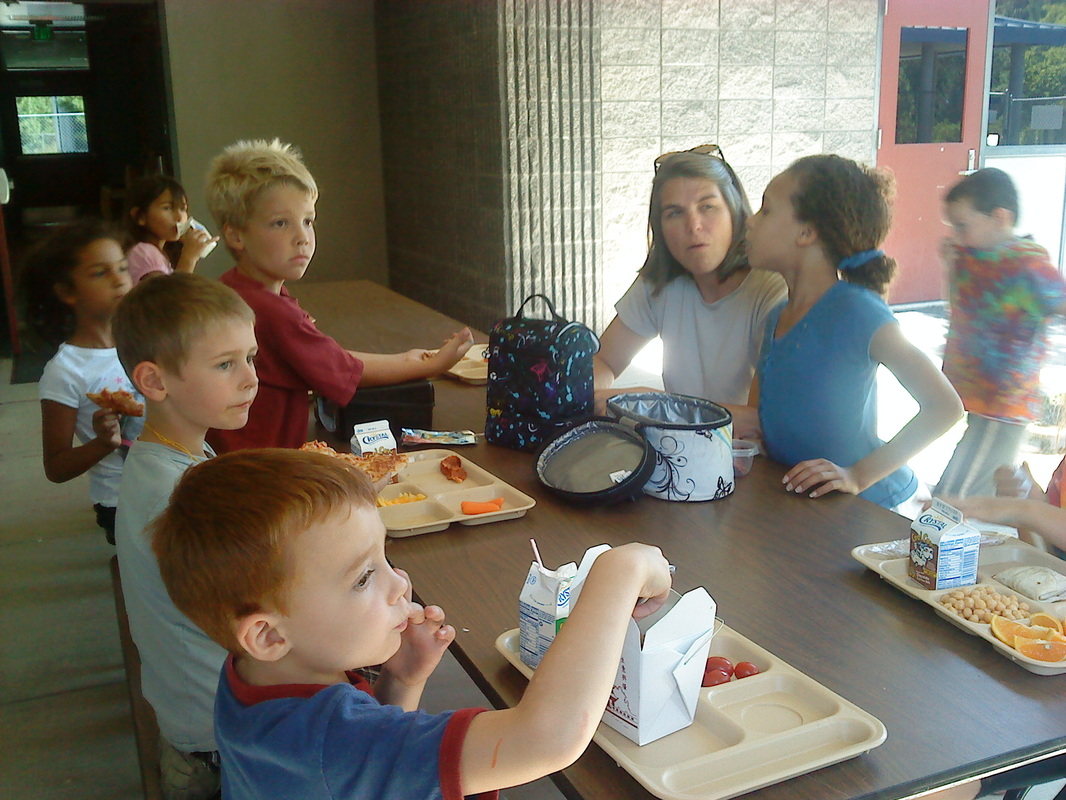Ordering and Paying for Breakfast and Lunch
Students will be asked about their meal orders daily.
While all student meals are free of charge for the 2023-2024 school year, we do ask that all parents/families fill out a Meal Application for their household. This form benefits not only our school but can potentially be used for discounted local programs, AP testing fee waivers, college application waivers, and Pandemic-Electronic Benefits Transfer.
While all student meals are free of charge for the 2023-2024 school year, we do ask that all parents/families fill out a Meal Application for their household. This form benefits not only our school but can potentially be used for discounted local programs, AP testing fee waivers, college application waivers, and Pandemic-Electronic Benefits Transfer.
Nutrition Program
FRCS is now running its own lunch program. We offer healthful meals every school day that are consistent with the Dietary Guidelines for Americans and meet the National School Lunch and Breakfast Program requirements for various nutrients, calories, fat and saturated fat.
The nutritional values of our meals are evaluated over a period of a week rather than a single meal or single food item. We use a nutritional analysis software approved by the United States Department of Agriculture.
We are making great strides in developing in offering healthy, appetizing meals. There are many benefits to our school and our families from this partnership, such as:
The nutritional values of our meals are evaluated over a period of a week rather than a single meal or single food item. We use a nutritional analysis software approved by the United States Department of Agriculture.
We are making great strides in developing in offering healthy, appetizing meals. There are many benefits to our school and our families from this partnership, such as:
- Meals are prepared right here in our kitchen each day so that foods are fresh and appetizing.
- As we develop the program more choices will be available.
- Lunch will include a daily garden bar with a variety of fresh fruits and vegetables offered. Students are encouraged to take what they will eat and eat what they take!
- Most of the bread products used are whole wheat.
- New standards mean that fat and sodium contents are down.
Free and Reduced Meals from FRCSFree and reduced meals are available to FRCS students. Click here for current income eligibility guidelines. Please contact our school office for more information.
Filling out the free and reduced meals program application not only helps our families, it helps our school. Many grants and funding opportunities depend on the percentage of free and reduced students in the school. Please help us qualify for these opportunities by completing and returning your free and reduced meal application here. Medical Conditions and Food AllergiesIf your student has a disability, medical condition or food allergy that requires special nutritional considerations please complete the Medical Statement to Request Special Meals and/or Accommodations and submit it to the FRCS office for processing. This statement will require the signature of a medical professional and is not for food preferences, only medically necessary accommodation.
We will make accommodations for students with disabilities, including special dietary needs or restrictions.
|
Solutions for Picky Eaters"Choosy" eating is a child-size step toward growing up and showing independence. What seems like a challenge to you may actually be an early step toward making food choices and decisions. Fluctuations in appetite are a natural part of the growth patterns of children. Relax and learn how to handle eating challenges and avoid conflict.
Ten Effective Ways to Handle a Choosy Eater:
|
FRCS Equal Opportunity Statement
In accordance with federal civil rights law and U.S. Department of Agriculture (USDA) civil rights regulations and policies, this institution is prohibited from discriminating on the basis of race, color, national origin, sex (including gender identity and sexual orientation), disability, age, or reprisal or retaliation for prior civil rights activity.
Program information may be made available in languages other than English. Persons with disabilities who require alternative means of communication to obtain program information (e.g., Braille, large print, audiotape, American Sign Language), should contact the responsible state or local agency that administers the program or USDA’s TARGET Center at (202) 720-2600 (voice and TTY) or contact USDA through the Federal Relay Service at (800) 877-8339.
To file a program discrimination complaint, a Complainant should complete a Form AD-3027, USDA Program Discrimination Complaint Form (PDF), from any USDA office, by calling (866) 632-9992, or by writing a letter addressed to USDA. The letter must contain the complainant’s name, address, telephone number, and a written description of the alleged discriminatory action in sufficient detail to inform the Assistant Secretary for Civil Rights (ASCR) about the nature and date of an alleged civil rights violation. The completed AD-3027 form or letter must be submitted to USDA by:
Questions: CNP Complaints | [email protected]
Last Reviewed: Tuesday, February 13, 2024
In accordance with federal civil rights law and U.S. Department of Agriculture (USDA) civil rights regulations and policies, this institution is prohibited from discriminating on the basis of race, color, national origin, sex (including gender identity and sexual orientation), disability, age, or reprisal or retaliation for prior civil rights activity.
Program information may be made available in languages other than English. Persons with disabilities who require alternative means of communication to obtain program information (e.g., Braille, large print, audiotape, American Sign Language), should contact the responsible state or local agency that administers the program or USDA’s TARGET Center at (202) 720-2600 (voice and TTY) or contact USDA through the Federal Relay Service at (800) 877-8339.
To file a program discrimination complaint, a Complainant should complete a Form AD-3027, USDA Program Discrimination Complaint Form (PDF), from any USDA office, by calling (866) 632-9992, or by writing a letter addressed to USDA. The letter must contain the complainant’s name, address, telephone number, and a written description of the alleged discriminatory action in sufficient detail to inform the Assistant Secretary for Civil Rights (ASCR) about the nature and date of an alleged civil rights violation. The completed AD-3027 form or letter must be submitted to USDA by:
- mail: U.S. Department of Agriculture
Office of the Assistant Secretary for Civil Rights
1400 Independence Avenue, SW
Washington, D.C. 20250-9410; - fax: 833-256-1665 or 202-690-7442; or
- email: [email protected]
Questions: CNP Complaints | [email protected]
Last Reviewed: Tuesday, February 13, 2024


